When to Use Direct or Pure Direct Mode on your AV Receiver
I consider myself an Audio Enthusiast, and while some may prefer the term audiophile, I don’t. I have purchased the exact opposite gear of an audiophile: AV receiver vs. Pre-Amp/Amp, CD player vs. transport and DAC, and cheap speaker wire vs. bespoke. I feel confident that my system sounds as good, if not better than their systems. It would blow their minds that when I listen to my CDs or streaming music that I, gasp, don’t use Direct or Pure Direct Mode on my AV receiver. Oh, the humanity of it all! Are you confused by what these modes do? Read on, and I explain what those modes do and when to use them.
Editor’s Note: I suspect that Andrew is very correct about how good his system sounds. While the audiophile may have paid thousands more for each piece of gear in their system, Andrew has made an even better investment – room treatments. Audiophiles notoriously eschew room treatments in favor of upgrading their cables or other components. Even though Andrew’s system is likely many thousands of dollars less expensive than an audiophile’s, his focus on following the science to improve his room has led to much better results. Be like Andrew.
So What is Direct and Pure Direct Mode on Your AV Receiver
Ok, so depending on what model of AV receiver you have, you may encounter different names and slightly different functions. For example, I have heard these called Straight, Pure, Pure Direct, Direct, and even Reference. In all cases, your AV receiver will have modes turn off all the fancy processing, EQ, room correction, and bass management and pass the signal directly to your speakers unadulterated. You’ll see people online refer to these modes as passing the signal as the “artist intended.” Most often people will say that you should do this for music.
Now, if you are anything like me, you considered the room correction offered when you made your AV receiver buying purchase. You knew that there were different flavors of room correction and that you wanted a specific level (or version) because you considered it best. But now you are hearing that you should use Pure Direct or Direct Mode when listening to music. If you try it out it certainly sounds different. But is that better?
In my case, my Denon AVR-X3600H AV receiver has two modes, Direct and Pure Direct. In Direct, it turns off all of my processing. This includes my room correction and bass management. In Pure Direct, it does all that, AND it turns off all the processes that aren’t related to the sound, even the front display. This, they claim, ensures that nothing interferes with the sound and the reproduction of those golden tones.
Sounds like audio bliss, eh? Not so fast. Keep reading.
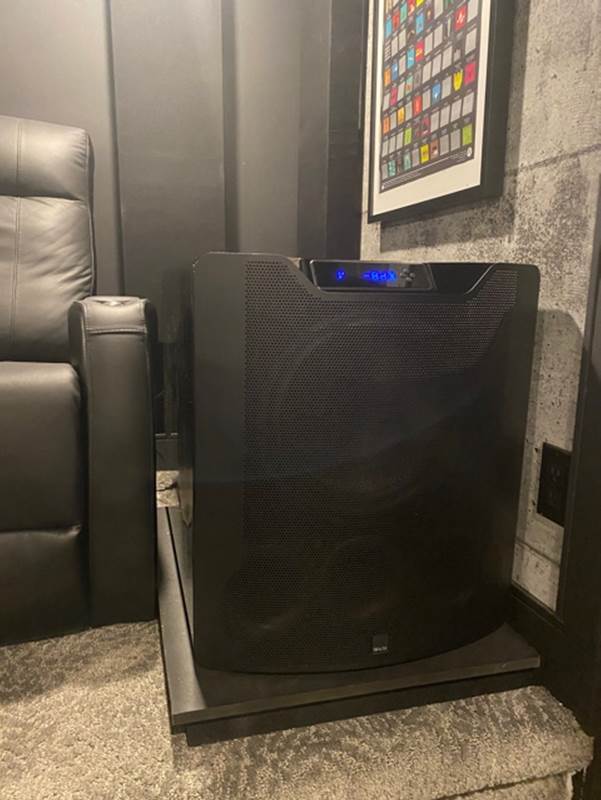
Stereo vs Direct
So, I am sure you are wondering, is there a difference between stereo and some form of “Direct” mode? Sure is! With stereo, you get full room correction, bass management, and all the built-in features of your AV receiver that optimize the sound for your space. With Direct and Pure Direct, you get none of that. And before you ask, Stereo Mode doesn’t up-mix or add any processing, aside from bass management (which sends the lowest notes to your subwoofers) and room correction (which EQs the sound for your room). Stereo mode is just that – your front left and right speakers only (and your subs if you have them). And trust me, you want that!
But Andrew, what about the artist’s intent? I hate to burst your bubble, but have you ever been to a recording studio? Most have a massive mixing board that transforms the raw output from the artist into something that we know is pleasing to most people. Ever been to a live concert? Kick drums don’t hit you in the chest like a sledgehammer. But the person mixing it makes sure it does by boosting it on the recording. On top of that, the artist has no idea what type of room you are listening in. Maybe they wanted cozy and intimate, but you have a set of big ole horn tweeters in a reflective space.
If you want artists’ intent, invite them to your house with a guitar and have them play live right in front of you – Pure Direct Mode from their guitar to your ears.

So When Should I Use Direct or Pure Direct Mode?
The simple answer is: Never. The more complicated answer is: Never! My Denon puts 105 watts (2 channels driven) per channel into my 90dB sensitive speakers. I sit eight feet away, using a fraction of that output. Putting my AV receiver into Direct or Pure Direct Mode doesn’t change the output or volume of those speakers. So turning off my AV receiver’s display or extra amps doesn’t change anything. And guess what? Those amps aren’t powered up and take away from anything unless they are needed.
Room correction compensates for any issues your room layout has and attempts to create a smooth and linear response. And your subwoofers? You want bass management engaged so that they get the lowest notes. Not only are they the best at reproducing them, but they are in the correct locations. Again, you want these features on. Don’t just trust me, try it out and trust your ears!
I legitimately have tried to find a scenario in which I would prefer to use Direct or Pure Direct over Stereo. The only time I have ever used Direct exclusively was in the ’90s when my Yammy had all these weird DSP modes attached to stereo, and I wanted to bypass them all. With modern AV receivers, this is no longer an issue. So today, I can’t think of a reason.
What About Interference?
The true audiophile will claim that any extra power being used by your AV receiver can corrupt the output by adding “noise” to the signal. They look at everything that your AV receiver can do (Bluetooth, video processing, DSP modes, etc.) and think, “Surely it can’t do that AND sound good?” Using Direct or Pure Direct Mode to turn all that off in their AV receiver gives them peace of mind that they are getting the best sound.
The reality is that there is little evidence that any of these extra features add any audible noise to playback. If it did, it would be…you know…audible. But they engage Pure Direct Mode on their AV receiver and say, “Hey! It sounds different! It’s doing something!” Yes, it is. It has disabled your bass management so your subwoofer(s) aren’t playing. It has turned off your room correction so there is no EQ applied. Your speakers are now running full range when they almost certainly aren’t. Yes, it sounds different. But different isn’t necessarily better. And better is what we are going for here.
Our Take
I think it’s pretty apparent that I don’t believe that using Direct, Pure Direct (or whatever Mode you call it) on your AV receiver is a good idea. You are taking all of the technology in your receiver and turning it off. While I agree that some of those DSP modes that add reverb or other effects are pure garbage, listening to your music in stereo, with room correction and bass management turned on, is a good thing. But as in most things related to audio, sound and sound preferences are wholly subjective. So let your ears be the best judge if you think Direct is for you. It is just important to know what these modes are doing so that you can make an informed decision.

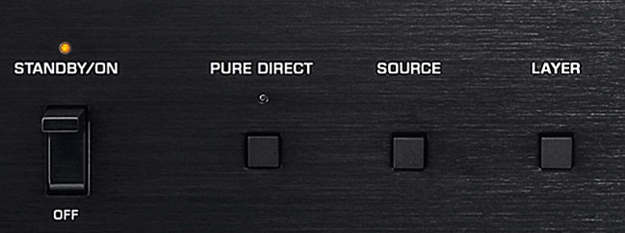

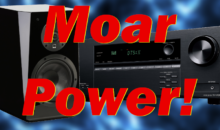
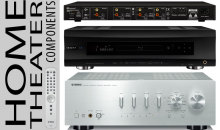
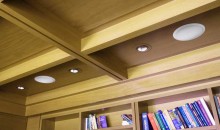

I agree 100 percent . I have good ears for sound,good speakers ,good subwoofer and after appreciating what a good subwoofer can do to enhance the music ,pure direct takes it all away. Music without enough bass sounds very bland, Hence many bands have bass players for that very reason. I find it amazing that anyone likes pure direct . Nice to realize someone else feels the same 🙂
Completely agree! Listen music in Pure direct mode in living rooms just to mock yourself)
And just to add another, I also agree. My AV amp was calibrated as soon as it was wired up in its spot with each channel. Direct and Pure Direct sound horrible in comparison to correct room EQ. Really lifeless, muddy and dull. Stereo with Room EQ is much livelier and cleaner.
Nonsense from an internet expert. The single most important use case for Pure Direct is for bypassing the receiver’s DAC. I started using an external ESS Sabre 9038 based dac to bypass my aging receiver’s dac and the difference in sound quality is night and day (to my ears). Pure Direct means your analog signal will not be re-digitized for various DSP transforms and converted back to analog using the *receiver’s* inferior DAC. Thus the signal is pure….and direct (from your external DAC).
Thanks for reading Max. Thanks for your feedback.
What about four cinema? Would DD be better?
Generally for movie content, you want the correct sound mode applied, and you also want your room correction and bass management on as well. I have yet to find a scenario when I don’t want my AV receiver applying room correction and bass management for ALL my content.
I am a recording engineer by profession and agree this is wholly subjective, but I have a pair of B&W 600 S2 bookshelfs that act as my L-R in my home theater. I am listening to some indie R&B music in the room right now in Pure mode on purpose. These speakers sound great. I never get a chance to hear them by themselves in other modes. Yeah, I listen to music in other modes to take advantage of my sub and surrounds and center, but when you need something “pure” and simple and “direct”, this mode works well. I selected these B&W for my L-R specifically for these times, and I am not missing all the “Michael Bay” type of enhancements that come with the other modes.
I am with you, almost everything we do in audio is subjective. As a recording engineer, you, more than anyone, would realize how much we manipulate recordings to get the perfect mix that appeals to most.
What I hope comes across in my article is this belief that THE ONLY WAY to enjoy music is with no processing at all. Sure, we can still make it to the moon without a supercomputer, but I think we all can agree that it’s easier with it.
Thanks for reading and thanks for the thoughtful reply!
No, it’s not. The audiophile value of the DACs is greatly exaggerated. In this case, different DACs do not save the situation, and the DSP of the receivers does not spoil anything. As the author of the article correctly noted, to listen in Pure direct you need a special room, preferably measured by an acoustic engineer and a high sound volume. We tried different DACs based on Saber 9038, Verita AKM 4490, CS and compared with the DSP-DAC in the pioneer receiver. All of them sounded good with certain minor differences and did not audibly outperform the receiver’s DAC. They all sounded good in stereo mode, but in pure direct mode they sounded as unsatisfactory as the receiver’s DAC, you will always feel the lack of bass and treble. It’s not about the DAC. Also it depends on the source, for example CD Genesis “Trick of the tail” sounds good in pure direct on all DACs, but Helloween «My god given right» 2015 with high RD compression sounds bad. I thought that my Pioneer receiver is a bullshit and went to the audio store to test my hypothesis on the cool equipment in the store. What was my surprise when on advanced systems in pure direct Genesis sounded good everywhere, and Helloween – bad, deaf and lifeless. So, the main criterion is your ears, have fun with music.
Hi Sergei, you and I have very similar experiences. I went down the rabbit hole and quickly realized how much money I wasted for marginal (or no) change to my sound. I now focus on quality pieces that will complete my system and last me a very long time. Thanks for the feedback!
I have a Sony AV and Pure Direct is the ONLY mode i have found that really enhances the dialog and suppresses the background noise and music significantly, which is what i need desperately.
How can I be sure that any Direct or Pure modes are disabled on my Denon 1600H? What is the auto setting as a choice with these settings?
Hi David,
The good news is that it’s usually off by default and you have to hit the direct button to put it into that mode. I believe if you hit the Direct button on your Denon remote 3x it puts it into auto mode which bypasses pure direct.
If I play DSD on my Denon x7200wa; is the audio going to be converted to PCM at some point in order to be processed with EQ etc. If so, wouldn’t it be wise to use “pure direct” to not spoil the nature and properties of the DSD signal ??
Nope
Completely different topics here but I will give it a shot. If only someone out there could explain, in simple terms, how we should adjust our cross-over frequency? Several threads suggested knowing the low end frequency response of a particular speaker and multiply that by 2 setting the crossover at the closest to that, that your amp has a setting selection for. Some suggest the standard 80 to keep things simple. And is it true that my amp: Denon 1912 is really NOT a music listening amp but rather a home theatre quarterback? Is it true that with this AMP I am kidding myself that I am getting the most out of my very expensive turntable? And then there is the topic of what the heck you set your sub-woofer at? The manual and others suggest turning the nob all the way to the LFE spot? But doesn’t the sub have its own frequency response rating and should I not turn the nob using my math above? At 67 I still have that lifelong dream of knowing that I have enough of a system–WHEN I HAVE IT SET UP CORRECLY? It appears Andrew is a wizard on room setup- I never gave it much thought, except trying to do what folks say about a solid 7.1 system. The kids have moved on so now I can play my music AS LOUD AS I WANT! Help me in Iowa!
Hi Paul,
There are a few schools of thought on where to set your cross-over. Some suggest 20hz over the low-end of your speaker. Others are set hard to the THX standard of 80hz. I use 80hz because it’s easy to set and it falls well within the low end of my speakers.
But here is what you need to know. The crossover is not a hard limit. If you set it to 80hz it doesn’t mean that everything under 80 will always go to the sub and anything over 80 goes to your speakers. It’s about finding a good blending space. I always use my onboard bass management where possible. It’s easier to make adjustments.
As far as not using your Denon with your turntable…your AV receiver is just as good as any integrated receiver, plus you get video switching, room correction and bass management.
From someone who has gone down every rabbit hole an AV enthusiast can go down, I can tell you to not worry about using an AV Reciever or finding the “perfect” cross-over setting. Focus on putting speakers in the right place and using room treatments to help with room modes or issues.
What about listening to Spotify using headphones? Yamaha 2 Channel Stereo or Pure Direct?
With headphones, you usually only get the options of mono, stereo, and sometimes a surround DSP. We’d recommend stereo.
I agree with everything in this very informative article… I use Audyssey Flat with two subs at 80hz with all music streaming outside of Roon (Tidal and Qobuz can be used in Roon). Plus, shock horror, I also listen to vinyl this way!
However, I do use Direct, Pure Direct for Roon from an external dac (Topping d10s) as I do room correction with convolution filters in the Roon DSP. I get these made by Thierry from Home Audio Fidelity which beats hands down any built in room correction.
So there is a use for Direct, Pure Direct albeit niche!
Fair enough!
Your receiver isn’t putting out 125 Watts per channel because 1. The Denon 3600 is rated at 105 Watts 2 ch. driven and 2. Because thats the rated output for only two channels.
Something tells me this guy has no idea what he’s talking about
Hey Elmo,
Great catch. You are correct, my old X3600 was 105w into 2 ch driven.
But I stand by my argument that pure direct is not necessary to free up watts. I sit 8′ from 90dB sensitive speakers. In no world will I need 105w to drive those speakers to ear bleeding levels. The notion that Direct, Pure Direct, or whatever its called on the receiver, is “necessary” or prefered is still bunk, in my opinion.
-A
Might be this is somewhat off topic …
Two questions, 1st put three ways, 2nd put two ways:
1.1) Is audyssey/dirac/equalizers… interferring with what the atmos renderer actually does?
1.2) Is the atmos renderer in any way configured depending on audyssey/dirac/equalizers…?
1.3) Is the atmos renderer aware about preprocessing of the incoming data?
2.1) Is the atmos filter applied before audyssey/dirac/equalizers… are getting involved?
2.2) Is any of the settings of my Marantz/Denon/Yamaha-500$-4000$ AVR, except for the speaker setup, influencing the atmos renderers function?
Trying to learn sth. about how “pure”, “direct” and “straight” the according switched are, regarding atmos with common AVRs (Marantz, Denon, Yamaha, etc..
I am not asking for differences in sound here, just for what the things actually do …
Sorry, about that. Just a hifi-voodoo-believer here trying to figure out, if and how to change the position of my speakers, aming at approximating my favorite sound “out of” atmos-sources, given my devices with as little additional electronics involved as possible.
Thanks for any hints, F.L.
1) Interfering is a strong word. Think of it this way – The content (whatever source it comes from) says, “Play this frequency at this volume from this (or these) speakers.” Your room correction has taken measurements that tell it how the room affects the output of your speakers. It then adjusts the volume (in the broadest sense) to counteract (as much as it can) those effects.
2) Room correction is applies last.
Hi FL,
Thanks for reaching out.
Let’s define how Atmos works to keep this as simple as possible. Atmos is a codec, or container, that tells the receiver to process and decode the signal. Once decoded, it sends it to the right speakers based on the mix. The setup in your AV receiver tells the processor what speakers you have. In the case of up-mixing, your AV receiver still decodes the signal and sends it to the speaker, but the up-mixer does some voodoo that uses DSP to phase the sound and make it sound like it’s coming from overheads. Some of those mixes can be very good. Come can be terrible. That all depends on the quality of the content mixer, and the implementation within your AV receiver.
So to answer your first set of questions, Audyssey/Dirac/EQ doesn’t interfere with implementing Atmos, but limits it. Direct/Pure Direct (or whatever it is called within the function list) bypasses the EQ completely and sends out an uncorrected/EQed signal to the Atmos container. This includes your bass management. So while you are getting the Atmos container, the AV receiver will get rid of all that fancy room correction and EQ and let you have it both barrels.
To answer the second question, the Atmos codec is applied first. It tells the AV receiver what codec it is getting, and what speakers to send it to. The AV receiver then will apply room correction, or lack thereof.
You can manually switch your AV receiver into Stereo Direct mode which will defeat the Atmos codec and force it all into 2 channel. But you can do that for almost any sound mode. We almost always recommend you allow your AV receiver to figure out what codec is needed and apply it.
Different amps do have different modes. The description in this only applies to the specific brand/model the writer has.
Pioneer has Auto, Direct and Pure Direct. Auto does all the sound processing, simulated surround and all. Direct has room coorection and bass management, but not simulated surround. Direct on Pioneer is like is like “stereo” mode, except if you have a properly recorded 5.1 digital signal, it will send that to the appropriate speakers, but not simulate surround. Pure Direct in the Pioneer has two functions. IF you have subwoofer set to “yes” not “plus” then you get the pure direct, with no processing at all, and the sound only going to the set speaker, with no management at all. If you have the sub woofer set to “plus” then you get bass management, but no room correction.
Sometimes when listening to 2 channel sound only, you want to turn off the simulated surround and not use auto mode, so saying an out right never use direct / pure direct is not right. The correct answer is – Use the mode that sounds best to you. Some music sounds better “direct” with no processing, some will sound better with the processing. The correct answer is – Experiment with your equipment. Move your speakers around, experiment with different settings and find the settings you like best with your music. Music may have different settings to movies (and likely will).
An example. I like listening to my Kate Bush albums in Pure Direct but I will enjoy my movies with the Direct or even Auto depending on the era the movie was made. I will listen to some classical music in Pure Direct also, but Metalica or similar I will use Direct. Noting all my modes are the Pioneer version.
Ultimately, play with your equipment. You are the one enjoying the music, not anyone else and no one knows how the artist intended it as a lot of artists approve demo’s listening on very non-audiophile equipment.
just bought a pioneer vsx 815(k i think), i was confused about some of the settings. when i have it on direct, i get a nice good rumble, it’s just two stereo bookshelf speakers at the PC, although it’s a bit powerful. i instead set it to stereo and analog, it sounds pretty good, still an enjoyable buzz from the bass. i don’t have a sub though. i was wondering in any case, to get the advantages of my sound card (it has an extended DAC), should i technically be using direct as to let the sound card handle the audio tweaks? or will stereo still let me enjoy the sound card’s offerings?
Hi, Andrew.
Thanks for writing such a sensible article. I’ve done all sorts of tests too, and I drew the exact same conclusions that you did. Each way you set your AVR will certainly make audio playback sound different, but not necessarily better. And if you make the appropriate adjustments, there is a chance any mode you choose will sound good enough, but then again not necessarily better. I have also noticed that I’ll choose different modes at different times, but my favorites are dolby surr 3.1 and dts virtual:x (I put away my surround speakers. They were not doing much for me). Until I read your article, I thought there was something wrong with my ears.
Pure audio mode is intended for two-channel stereo. Your AVR is set up for surround sound, and when you wish to use it for traditional stereo music, it turns off all the surround sound features. When listening to most music, the best sound is the clearest sound, and that can only come from three speakers on each channel in stereo mode: base, mid, and top end. Complicating the room with any more speakers will only make it muddy.